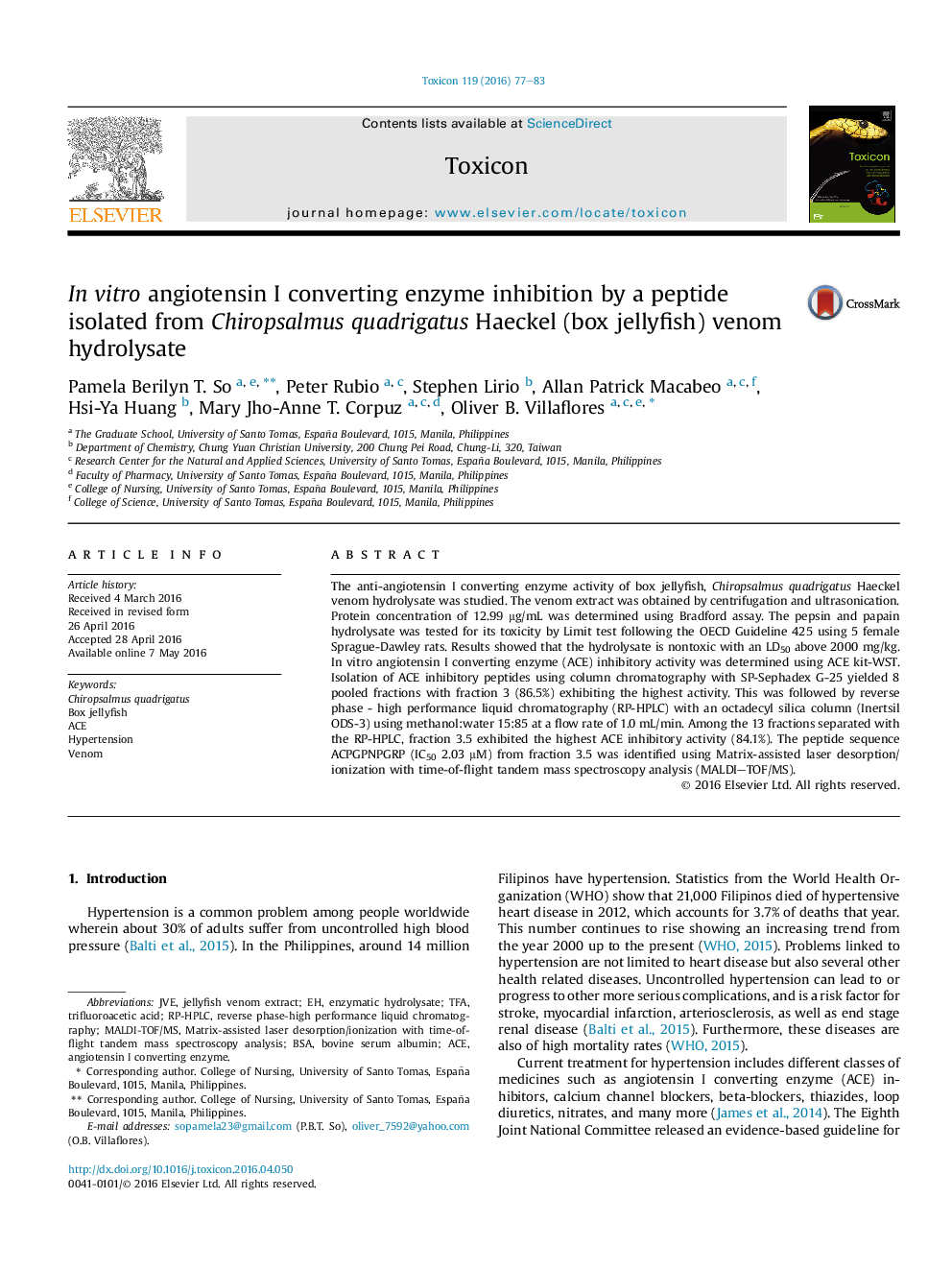| Article ID | Journal | Published Year | Pages | File Type |
|---|---|---|---|---|
| 2063996 | Toxicon | 2016 | 7 Pages |
•Jellyfish venom extract (JVE) was prepared and subjected to successive pepsin and papain enzymatic hydrolysis.•The sample was fractionated using SP-Sephadex G-25 and RP-HPLC chromatography to identify peptides inhibiting ACE activity.•One peptide sequenced de novo using MALDI-TOF-MS, ACPGPNPGRP, has an IC50 of 2.03 μM.
The anti-angiotensin I converting enzyme activity of box jellyfish, Chiropsalmus quadrigatus Haeckel venom hydrolysate was studied. The venom extract was obtained by centrifugation and ultrasonication. Protein concentration of 12.99 μg/mL was determined using Bradford assay. The pepsin and papain hydrolysate was tested for its toxicity by Limit test following the OECD Guideline 425 using 5 female Sprague-Dawley rats. Results showed that the hydrolysate is nontoxic with an LD50 above 2000 mg/kg. In vitro angiotensin I converting enzyme (ACE) inhibitory activity was determined using ACE kit-WST. Isolation of ACE inhibitory peptides using column chromatography with SP-Sephadex G-25 yielded 8 pooled fractions with fraction 3 (86.5%) exhibiting the highest activity. This was followed by reverse phase - high performance liquid chromatography (RP-HPLC) with an octadecyl silica column (Inertsil ODS-3) using methanol:water 15:85 at a flow rate of 1.0 mL/min. Among the 13 fractions separated with the RP-HPLC, fraction 3.5 exhibited the highest ACE inhibitory activity (84.1%). The peptide sequence ACPGPNPGRP (IC50 2.03 μM) from fraction 3.5 was identified using Matrix-assisted laser desorption/ionization with time-of-flight tandem mass spectroscopy analysis (MALDI–TOF/MS).
